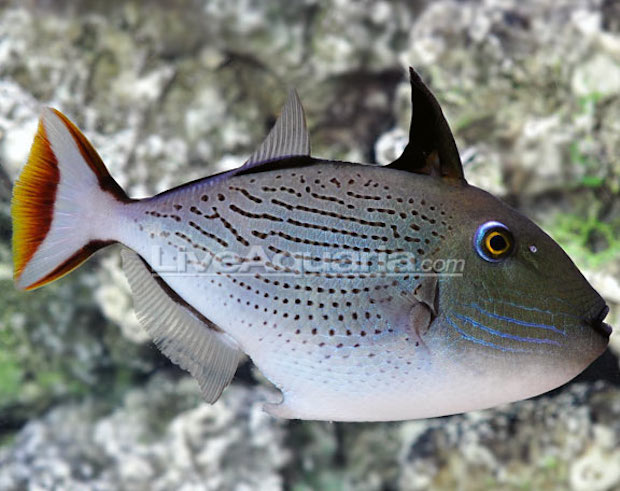Xanthichthys lineopunctatus is a triggerfish so rare that it doesn’t even have a real common name, but that hasn’t stopped LiveAquaria from scoring the first ever live specimen for the aquarium trade. LiveAquaria is going with the Fishbase common name of “Striped Triggerfish” but we prefer to go with teh literal latin translation and call this beautiful reef safe trigger the “line spot triggerfish”.
Xanthichthys triggerfish like crosshatches, goldenbacks, bluefaces and the Kiri triggerfish, feature prominently in the aquarium hobby due to their hardy nature, peaceful disposition and especially because they are relatively benign inhabitants of a reef aquarium environment. And while some of the Xanthichthys species are sought after because they are rare, none can match the singular nature of this first ever, historic offering from LiveAquaria.
If the expected $2500 price point seems like a lot for a triggerfish, consider that this species is way more rare than the rarest peppermint angelfish, than the rarest Claire fairy wrasse and in terms of singularity it absolutely every other species in the book. Heck, most books don;t even bother covering the line spot triggerfish since it is completely unknown to reefers and collectors. Just about the only time the line spot triggerfish is seen alive, briefly, is when it is fished up from the depths by fishermen but these quickly perish due to decompression complications.
Despite all these hurdles, LiveAquaria succeeded in sourcing the first live Xanthichthys lineopunctatus from the Indian Ocean. Better yet, whereas the rarest species are hardly ever seen alive at sizes less than a jumbo eight to ten inches (20-25cm), this line spot triggerfish is a perfect aquarium size at just a hair under five inches long (13cm). Surely this species will appear again in the aquarium trade but who knows if it’ll be a year from now, or a decade. Either way, some of the most diehard rare fish collectors are likely to have an itchy trigger finger when it goes live on the Diver’s Den today.




